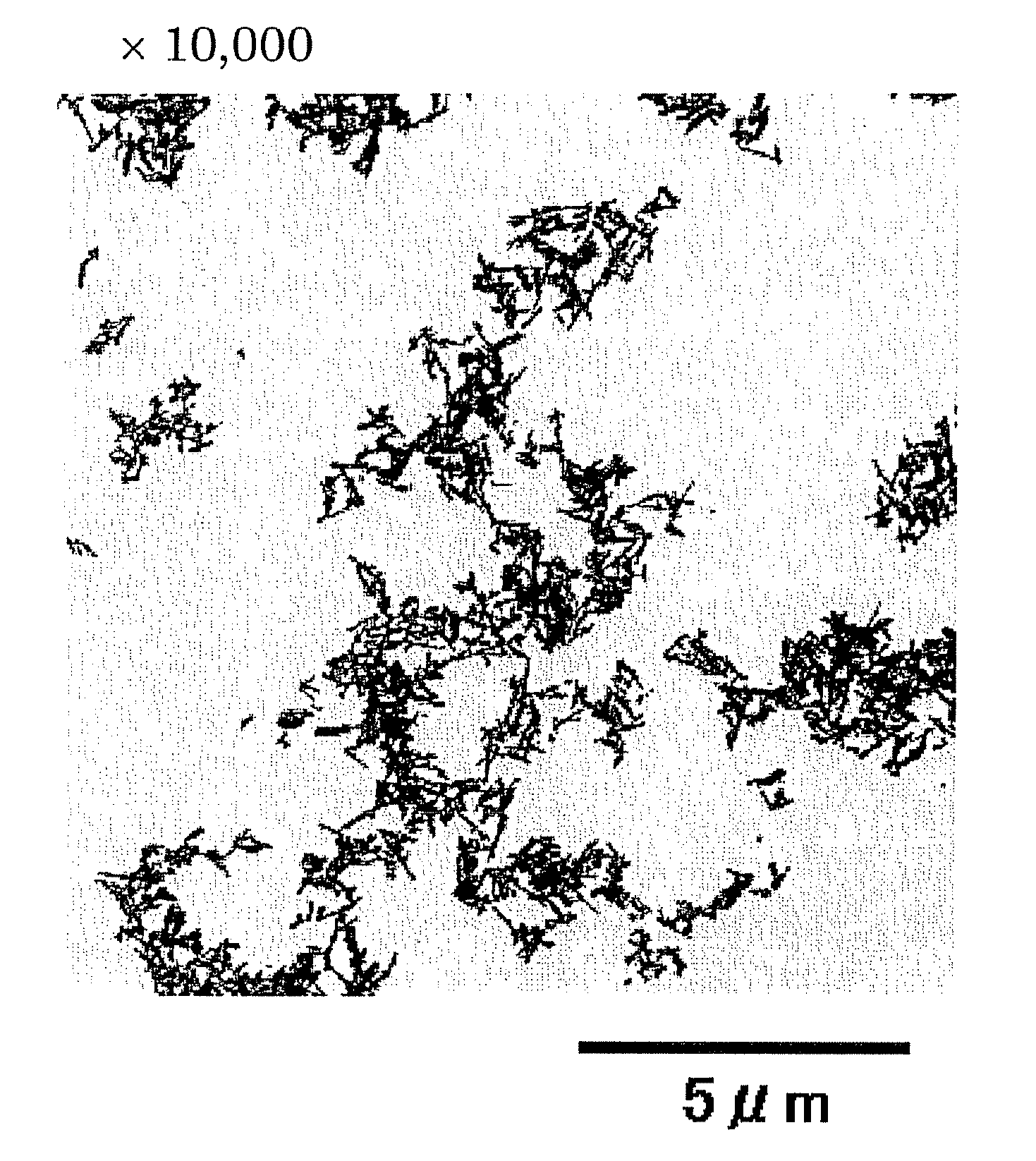Carbonates and Method for Producing the Same
- Summary
- Abstract
- Description
- Claims
- Application Information
AI Technical Summary
Benefits of technology
Problems solved by technology
Method used
Image
Examples
example 1
[0107]Solution A for Example 1 was prepared by adding 9.96 g of Sr(OH)2.8H2O (manufactured by KANTO CHEMICAL CO., LTD.) to 268.5 ml of methanol and by stirring the mixture.
[0108]Solution B for Example 1 was prepared by dissolving 9.80 g of ammonium carbonate (manufactured by KANTO CHEMICAL CO., LTD.) and 5.07 g of NaOH granules in a mixture of 750 ml of purified water and 250 ml of methanol.
[0109]To solution A for Example 1, which was kept at 5° C. in a temperature-controlled bath and was kept stirred at 700 rpm, 62.5 ml of solution B for Example 1 was added via two nozzles at an adding speed of 0.30 ml / min. After completion of this addition, 61.25 ml of purified water was added, and the temperature was increased to 45° C. and the number of stirring revolutions was further raised to 900 rpm. While keeping the temperature and the number of stirring revolutions, 132.8 ml of solution B for Example 1 was added via two nozzles at an adding speed of 0.90 ml / min.
[0110]The solution thus obt...
example 2
[0111]Solution A for Example 2 was the same as solution A for Example 1.
[0112]Solution B for Example 2 was the same as solution B for Example 1 except that methanol (250 ml) was not added.
[0113]To solution A for Example 2, which was kept at 8° C. in a temperature-controlled bath and was kept stirred at 700 rpm, 62.5 ml of solution B for Example 2 was added via two nozzles at an adding speed of 0.30 ml / min. After completion of this addition, 61.25 ml of purified water was added, and the temperature was kept at 8° C. and the number of stirring revolutions was further raised to 900 rpm. While keeping the temperature and the number of stirring revolutions, 132.8 ml of solution B was added via two nozzles at an adding speed of 0.90 ml / min.
[0114]The solution thus obtained was subjected to centrifugation, and the collected precipitate was washed with water, a part of which was observed by a transmission electron microscope (TEM). Results of this observation are shown in FIGS. 2A and 2B. Re...
PUM
 Login to View More
Login to View More Abstract
Description
Claims
Application Information
 Login to View More
Login to View More - R&D
- Intellectual Property
- Life Sciences
- Materials
- Tech Scout
- Unparalleled Data Quality
- Higher Quality Content
- 60% Fewer Hallucinations
Browse by: Latest US Patents, China's latest patents, Technical Efficacy Thesaurus, Application Domain, Technology Topic, Popular Technical Reports.
© 2025 PatSnap. All rights reserved.Legal|Privacy policy|Modern Slavery Act Transparency Statement|Sitemap|About US| Contact US: help@patsnap.com



